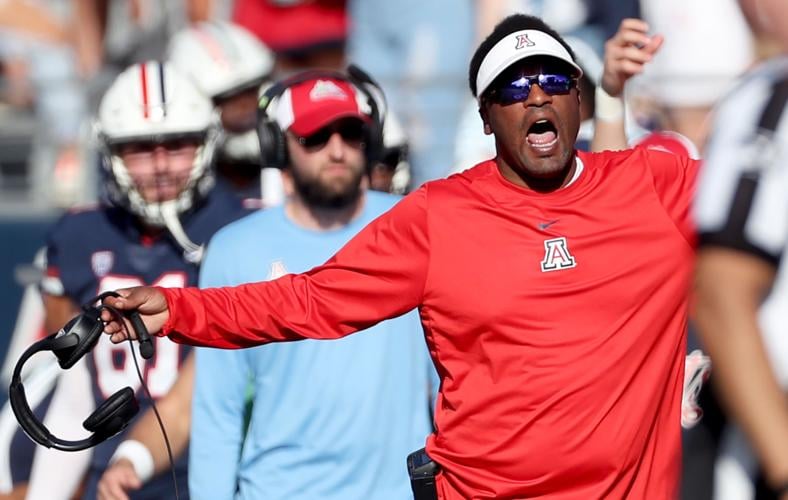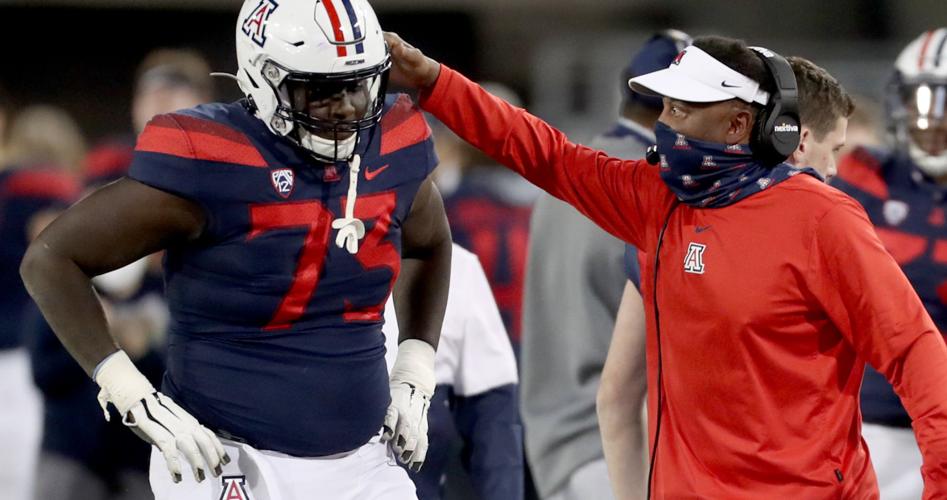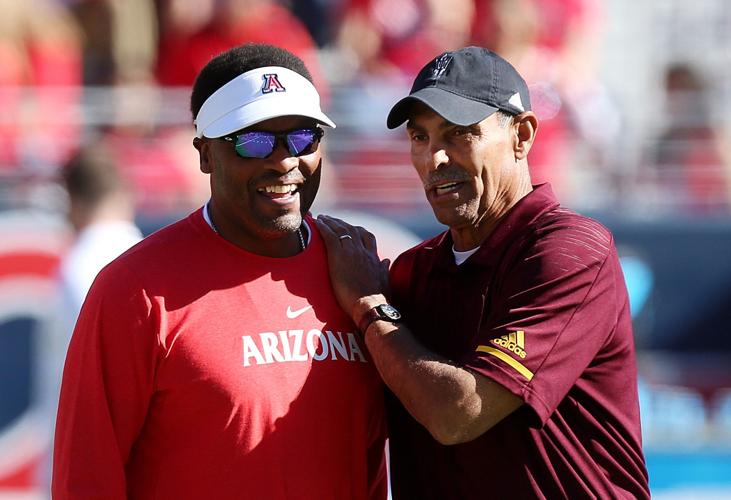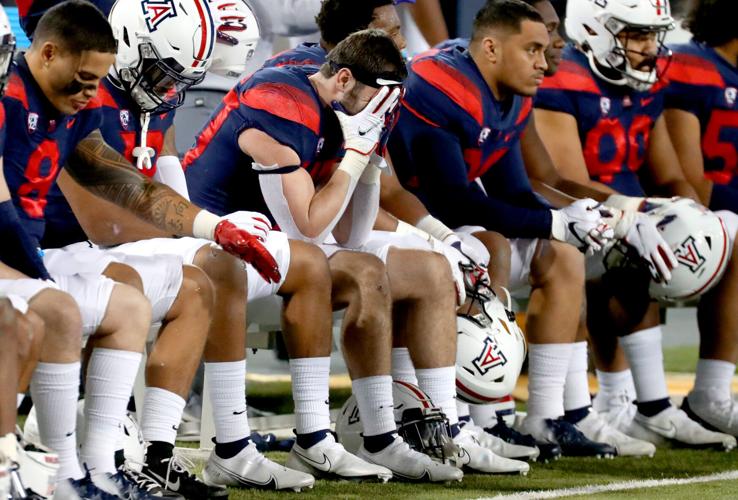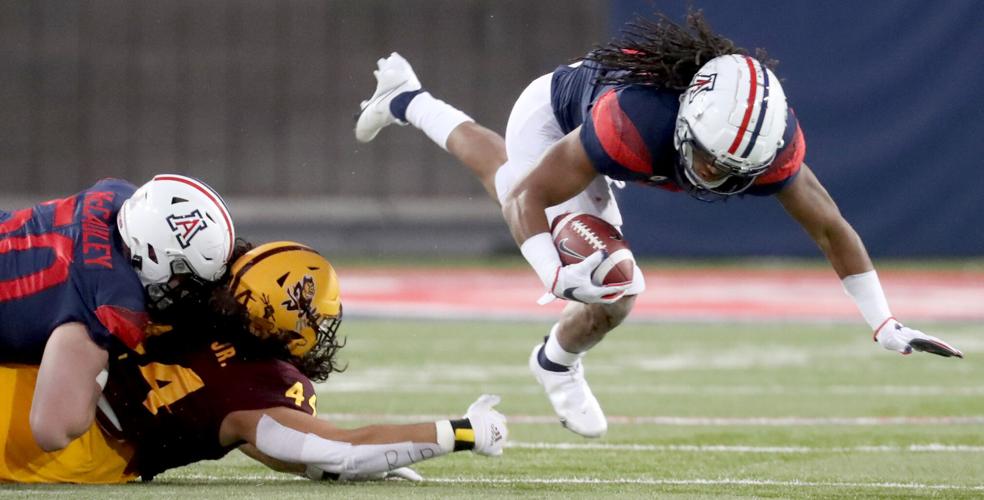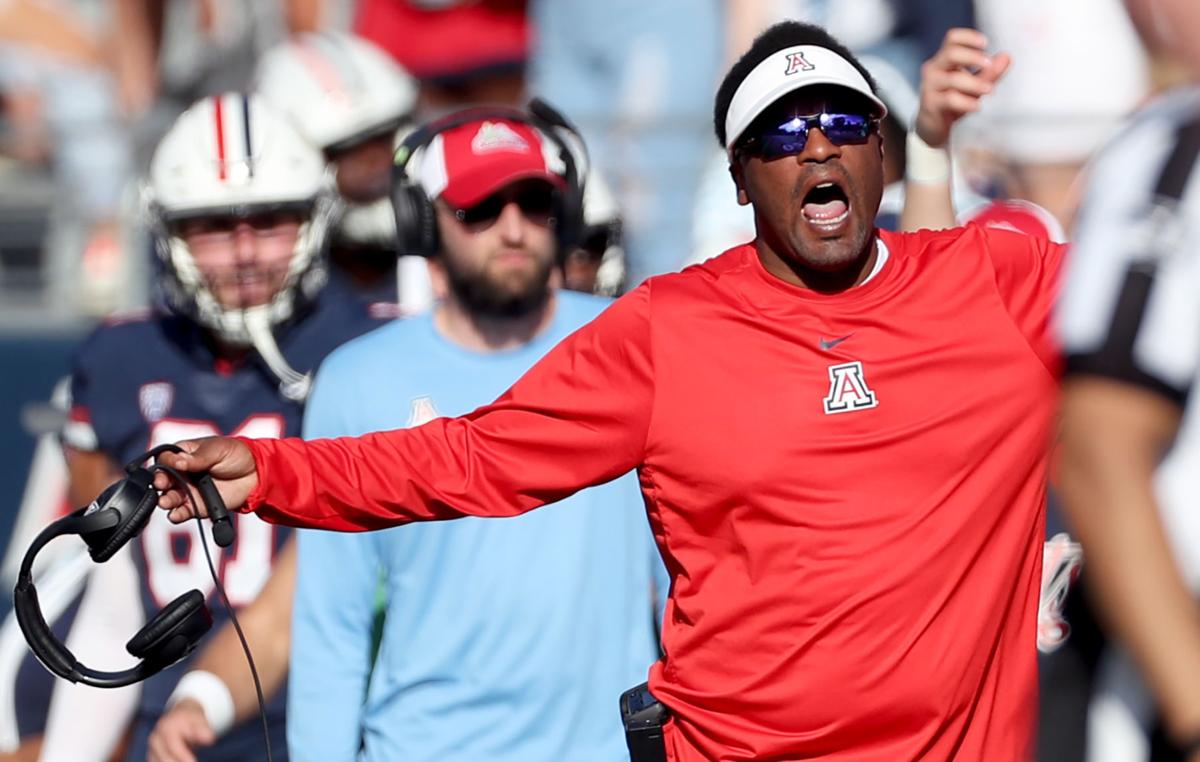Normally, in the aftermath of an Arizona Wildcats football game, we’d watch it again and give you an in-depth breakdown.
These are not normal times. And who among us wants to relive that debacle?
A lot has happened since Friday night. Arizona fired Kevin Sumlin. The Wildcats had a game added at Cal, but then it was canceled late Sunday night.
With a coaching search underway and Arizona’s 70-7 loss to Arizona State in the rearview mirror, we present five takeaways on the state of the UA program:
1. Competitive balance
Sumlin’s future never hinged on how many games the Wildcats won or lost this season. It was always about how they played. Were they competitive? Did they fight for 60 minutes? Did they show signs of progress?
Even in defeat against USC, UCLA and Colorado, you could make that case. The Washington game, which was not competitive for three quarters, could be dismissed as a bad matchup. What happened Friday was none of the above. You hate to say this about anyone, but the Wildcats did not seem prepared to play.

Kevin Sumlin walks offensive lineman Jordan Morgan off the field in the final moments of the Wildcats’ 70-7 loss to ASU last week.
They were incredibly sloppy. They were quickly dispirited. They were outcoached, overmatched and overwhelmed. After surrendering a touchdown on the opening kickoff, Arizona put together a drive chart that requires a double take: fumble, interception, downs, fumble, fumble, downs.
After a second-quarter touchdown, the Wildcats turned the ball over on downs again. In the second half, they fumbled again and threw two more interceptions.
It was a mess. That type of performance against that opponent on that stage couldn’t be tolerated — especially when it was Arizona’s 12th loss in a row. Sumlin left the UA administration with no choice but to move on.
2. Walking the walk
You can’t ignore the defense when the other team scores 70 points.
But the context is important here, and it reflects some of the program’s overall issues under Sumlin.
Arizona had been living on the edge defensively all season because of off- and in-season defections that depleted its depth at linebacker and defensive back.

Arizona's bench watches the second quarter unfold in their 70-7 loss against Arizona State at Arizona Stadium, Tucson, Ariz., December 11, 2020.
The Wildcats played an inordinate number of walk-ons against the Sun Devils. We have all the respect in the world for those young men. Heck, the UA might have discovered a contributor in walk-on linebacker Rourke Freeburg.
But when about half of your second string consists of walk-ons, that’s problematic.
How did it get to that point?
A combination of transfers (which began last December), opt-outs and injuries. Every player who left had his own reasons. Some might have been bad fits in terms of culture-building.
But at a certain point, a theme emerges: Those players did not want to be here. Again, problematic. Maybe that wouldn’t have been the case with future recruiting classes; most of the players who left weren’t “Sumlin’s guys.” But recruiting didn’t go according to plan either. Which leads us to item No. 3.
3. Recruiting stagnation
Recruiting was supposed to be Sumlin’s calling card. Poor recruiting, especially in the trenches, led to Arizona’s decline over Rich Rodriguez’s final three seasons.
Sumlin had been an ace recruiter at previous stops.
He never significantly elevated the level of recruiting here. According to 247Sports’ ratings, the Wildcats’ past three classes (including 2021, entering Sunday) have ranked in the 50s nationally. Two of the previous three cracked the top 50.
Those rankings are always imprecise, but there was no obvious improvement. Two of the most promising players in the sophomore class, cornerback Christian Roland-Wallace and defensive tackle Kyon Barrs, mainly were recruited by Demetrice Martin, who’s now with Colorado.

Kevin Sumlin couldn’t get through three years at Arizona, while ASU’s Herm Edwards, right, seems to have the Sun Devils headed in the right direction.
The top three players in the 2019 class were Houston products Grant Gunnell, Boobie Curry and Bobby Wolfe. Gunnell has flashed considerable promise, but it’s hard to judge anything he’s done this year because the offensive line has been so porous.
It’s a position Sumlin and his staff tried to address that inexplicably has regressed. The jury’s still out on Curry. Wolfe opted out of the 2020 season and went home after dressing for the UCLA game and not playing a single snap.
He was unavailable for the first two games for undisclosed reasons.
4. Long road ahead
You probably don’t want to hear this, but there’s no quick fix for this program.
The rebuild, no matter who the coach is, will be long and arduous. Arizona had under 60 scholarship players available for the ASU game.
Four of them were senior defensive linemen and rotation regulars who might not be back next year. Arizona had 19 players committed to the class of 2021 as of Sunday afternoon — and there’s no telling how many will sign here with the coaching situation in flux. (Two reopened their recruitments Sunday.)

Arizona State defensive lineman T.J. Pesefea Jr. (44) manages to trip up Arizona running back Gary Brightwell (0) slowing him down on his end run in the first quarter of their Pac-12 game at Arizona Stadium, Tucson, Ariz., December 11, 2020.
The early signing period starts Wednesday. The timing is awkward to say the least. At most, via midyear-enrollment accounting, the UA can take 28 players. No matter how many players they lose, that number won’t go up. Unless the Wildcats add a handful of plug-and-play transfers, many of the incoming freshmen will occupy spots on the defensive two-deep.
In all likelihood, Arizona’s defense will be among the youngest in the nation next season. Generally speaking, that does not equate to immediate success.
The offense, in theory, has enough pieces to be at least adequate. But the talented skill players on the roster and/or on their way won’t have a chance to shine if the offensive line doesn’t get fixed first.
5. Money matters
Money is tight everywhere. That problem isn’t unique to Arizona during the pandemic. The UA faces a revenue shortfall of upwards of $50 million. The university recently laid off 21 athletic-department employees and kept 15 open positions unfilled.
So how could the school justify firing Sumlin and paying him $7 million-plus to leave? First of all, Arizona doesn’t have to cut Sumlin a check for the full amount right away; half is owed within 30 days of termination, the other half by contract’s end (Jan. 15, 2023).
Second, each Pac-12 school has access to a loan of up to around $80 million. It comes with interest (3.75% over 10 years), but the UA is expected to take it; the only questions are when and how much.
Third, Robert C. Robbins and David Heeke had to calculate the cost of keeping Sumlin. If they had announced he was coming back, the reaction among an already frustrated fan base would have bordered on revolt.
Don Draper couldn’t have come up with a marketing campaign to sustain season-ticket sales, let alone boost them. That was a critical part of the equation. You couldn’t sell the status quo. You can sell starting over.


